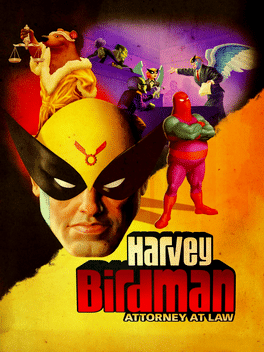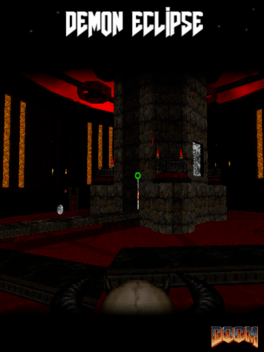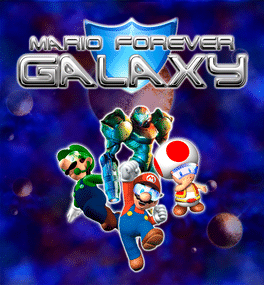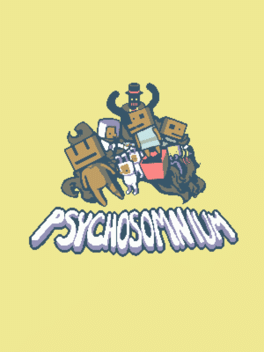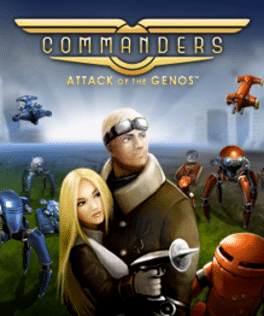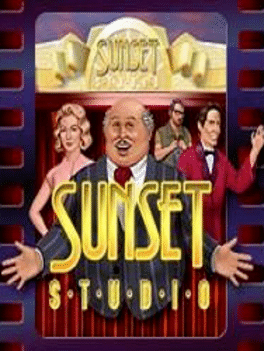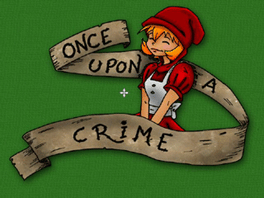New Games - Page 10013
-
Sonic Riders: Zero Gravity
2008
star 6Sonic Riders: Zero Gravity is a hoverboard racing video game developed by Sonic Team and published by Sega for the PlayStation 2 and Wii. It is the fifth racing game in the Sonic the Hedgehog series, and the second entry the Sonic Riders trilogy. A port for the Xbox 360 was cancelled during development, while a sequel, Sonic Free Riders, was released exclusively for that system in 2010. Gameplay in Zero Gravity is largely similar to its predecessor, with characters racing on different types of hovercraft called "Extreme Gear". In addition to the mechanics from the previous game, Zero Gravity adds a new gameplay system based around gravity that replaces the predecessor's "fuel" system. During the race, performing tricks and other actions will increase a character's Gravity Points, or GP. If players have accrued enough GP by the time they enter certain areas of the track, they will enter a Zero-Gravity Zone, where they can perform one of two maneuvers. A Gravity Dive will create a small black hole that points gravit -
Harvey Birdman: Attorney at Law
2008
star 6.5Harvey Birdman, Attorney at Law is an animated interactive adventure game that merges the fun and mayhem of the Adult Swim TV show with a unique style of gameplay. Players will step into the shiny wingtips of Harvey Birdman, a third-rate superhero turned third-rate defense attorney charged with exonerating parodied classic cartoon characters. Over the course of the game, players must guide Harvey through a series of odd and comical cases. Each of the game's five interactive stories takes the winged crusader of justice to familiar locations from the TV show. In order to prove his client's innocence, Harvey must peruse the scene of the crime, gather evidence, talk with other cartoon characters, occasionally have drinks with opposing council, and tear holes-no matter how ridiculous-in the testimony provided by the witness for the prosecution. Harvey must bring the whole story together to defend his client in a court where anything can happen...including a confrontation with the prosecution who brandishes a Shrink Ray -
World Championship Paintball
2008
World Championship Paintball offers unprecedented game depth and paintball realism for the PlayStation 2. Advance your team bunker by bunker to World Championship supremacy. You can play in 6 different styles on over 20 different fields, or use the Playfield builder to continually generate new fields so no game will ever be the same. -
Demon Eclipse
2008
Demon Eclipse
2008
Demon Eclipse was a Doom II mod for GZDoom by Amuscaria (formerly Eriance). Originally intended to be told through the eyes of another marine escaping the invasion on Earth in during Doom II, Demon Eclipse went through multiple iterations but was ultimately dropped due to real-life and the loss of motivation for the project by the author. The project had succumbed to multiple rounds of scope-bloat and become too much to manage. The first episode of first dropped from the mod, but was later made standalone by Blue Shadow. The intent was to focus and refine the second episodes 'hell-tech' theme in the "Hell-Forged Edition", but that also fell thru in 2014. In 2017, Amuscaria had revive the project in a complete reboot of the second episode by the name of Hell-Forged, with a much narrower focus around the Gothic hell-tech theme. -
SpongeBob SquarePants: Fists of Foam
2008
Fists of Foam is an educational video game that was released in 2008 for the LeapFrog Didj and later for LeapFrog Leapster Explorer in 2012. In this game, Master Udon has captured Sandy and it's up to SpongeBob and Patrick to save her. This game is based on the episode "Karate Island." -
Polar Paradise
2008
Polar Paradise
2008
It's Christmas Eve and Dinky is angry. After returning home from his last adventure, Dinky discovers that his family have (once again) been kidnapped by the forces of evil. A mysterious trail of toys, tinsel, and wrapping paper leads into the night... Enraged and with nothing to lose, Dinky heads out to save his family from a grizzly (yet seasonal) demise. -
Antbuster
2008
Antbuster
2008
Antbuster is a game that aims to protect your delicious cake on a picnic. The cake has 8 pieces and the ants will do everything to reach them. Fortunately, you can spread cannons through the garden, and each cannon can be evolved in several different ways. There are over 50 different types of cannons to crush these insects. Can you protect the picnic? -
Mario Forever Galaxy
2008
Mario Forever Galaxy
2008
Mario Forever Galaxy is a fixed shooter game developed and published by Softendo. Despite being a direct sequel to Mario Forever, gameplay is radically changed from its predecessor, now more reminiscent of games like Galaxian and Space Invaders than 2D platformers like the original Super Mario Bros. After his defeat on Mario Forever, Bowser rebuilt his army and made it strong again, then proceeded kidnapping Princess Peach, but this time to another planet in the space. Mario then teams up with Luigi, Toad and Samus, to save Princess Peach once more from the hands of Bowser. Each character has their own skills and a slightly different space ship, with a variety of weapons and upgrades unlockable throughout the game. There's 8 different galaxies the player must clear, each with their own stages and bosses, before reaching Bowser's location and being able to rescue Princess Peach. -
Max Payne Bundle
2008
-
Momotaro Dentetsu Tohoku Deluxe
2008
Momotaro Dentetsu Tohoku Deluxe is a video game in the Momotaro Dentetsu series of board game-style video games, genre released in 2007 by Hudson Soft for mobile phones. -
Hush
2008
Hush
2008
Hush is a short sociopolitical game inspired by the Rwandan Genocide in 1994, the darkest period of the Rwandan Civil War. Hush has the player relive the historical events through a personal experience - helping the Tutsi mother Liliane with her lullaby to keep her child silent and thus hide it from the Hutu. -
Psychosomnium
2008
Psychosomnium
2008
Psychosomnium is an experiment in illogical puzzles or dream world logic. You'll play the game trying to figure out how to reach an obscure goal. You'll have to do many strange things to reach this goal, like going in directions you wouldn't expect to be able or even putting yourself in unreasonable, and perhaps deadly, peril. -
Turtix Rescue Adventure
2008
The sequel to Turtix is based on the same concept as the original game. During a class, the teacher misreads a recipe and all the students are whisked away in bubbles. Turtix once again needs to save all of them and bring them back safely. Turtix: Rescue Adventures is a side-scrolling game where Turtix explores game worlds to locate the trapped students and needs to bring them back. There are three distinct settings: Magic Forest, Underground Caves and Barren Desert with 60 levels in total. The game can be played in two modes: Casual and Hardcore. In Hardcore levels need to be replayed if these are not successfully completed. -
Cursor*10
2008
Cursor*10
2008
Cursor*10 is a puzzle game where the player controls a cursor and the goal is to reach the sixteenth floor of a level in a race against time. During the course of the game, events will loop when time runs out and the player is able to cooperate with a past version of himself, as all the previous actions of the cursor can still be seen and influence the current session. As such, eventually up to ten cursors will cooperate to reach the sixteenth floor, clicking boxes to open them, mounting stairs and pressing buttons simultaneously. There is no sound and the graphics are drawn as outlines in black and white, shown from an isometric perspective. -
Showtime Championship Boxing
2008
star 2Lace up the gloves and get in the ring for "Showtime Championship Boxing". Train and fight your way through the ranks. Blood, sweat, and tears is the only way you will conquer the top contender and be the ultimate champion. An interactive boxing experience that takes gamers to new levels. "Knockout" cutting edge technology takes "the sweet science" off the canvas and raises the Championship Belt on video game pugilism. 14 boxers-7 heavyweights, 7 welterweights 4 different ring environments-Chicago, New York, Las Vegas, Los Angeles Player can unlock other boxers as Title Belt Series progresses 3rd person camera view 6 modes - Single Fight, Amateur Belt, Contender Belt, Showtime Belt, King of the Ring, and Multiplayer Fights can be between four and twelve rounds Decisions are made based on TKOs, KOs, or points Takes full advantage of the Wii Remote and Nunchuk Style interactive capabiliti -
Commanders: Attack of the Genos
2008
star 8Lead your army in a turn-based fantasy strategy game you’ve been waiting for! Hex Commander: Fantasy Heroes is a turn-based strategy game that will put you right in the middle of conflict between humans, orcs, goblins, elves and dwarves. -
Rune Factory 2: A Fantasy Harvest Moon
2008
star 6.7Rune Factory 2 is set several years after the first game. The evil Sechs Empire has been defeated, and the Kingdom of Norad is once again at peace. Things may not stay that way for long, however, as dark premonitions foretell of dangers to come. It's up to player to uncover the source of these premonitions and bring peace to the kingdom once more. In a first for the Rune Factory series, the story of Rune Factory 2 is multigenerational. Players begin the game as Kyle, a strange man who comes to Alvarna Village. Eventually, players will take on the role of Kyle's child, opening up a whole new adventure. -
Sunset Studio
2008
Sunset Studio
2008
Help turn Sunset Studio into a box-office smash in this star-studded hidden object challenge. The Director of Sunset Studio's latest movie needs help finding the necessary props fast. Search a variety of different film sets, including Adventure, Courtroom, Sitcom, and more, for the requested props. The faster you find the props, the more stars the film will receive! Original tools are on hand to help your search, but your greatest asset will be your keen eye for detail. Featuring two game modes, 12 award-winning movies to create, and 60 stunning levels, Sunset Studio is the place where dreams of fun come true. -
Once Upon a Crime
2008


